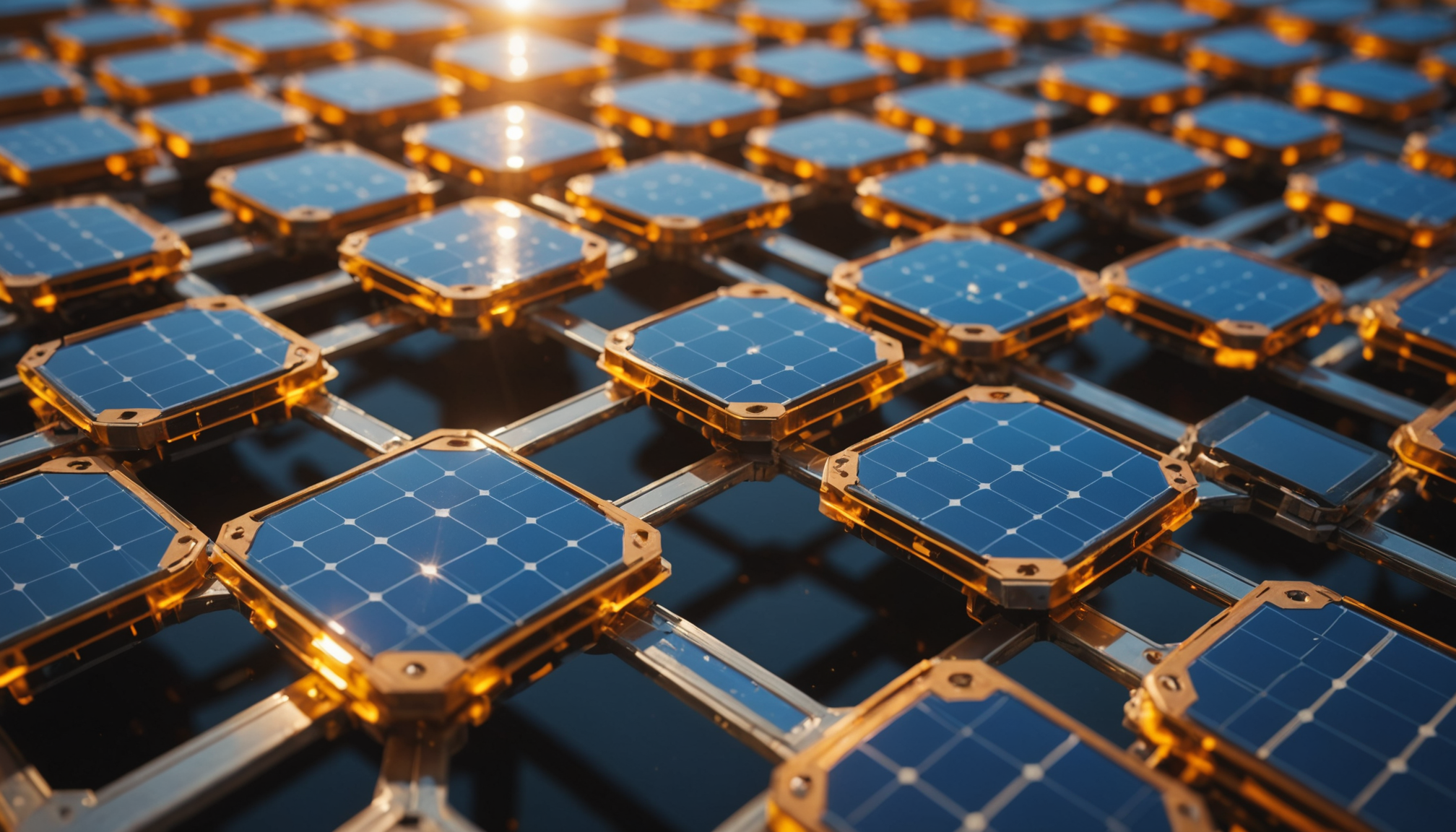
Report on Engineering Bonding Sites for Enhanced Stability in Perovskite Solar Cells
Introduction
Recent advancements in perovskite solar cells have demonstrated significant improvements in efficiency through the use of self-assembled monolayers (SAMs). However, challenges remain in achieving uniform, dense, and stable SAM formations. This report highlights a novel solution-based strategy to enhance the hydroxylation of indium tin oxide (ITO) surfaces, thereby improving SAM anchoring and overall device performance. The development aligns with several Sustainable Development Goals (SDGs), particularly SDG 7 (Affordable and Clean Energy), SDG 9 (Industry, Innovation, and Infrastructure), and SDG 13 (Climate Action).
Methodology
Hydroxylation of ITO Surfaces
The hydroxyl groups on ITO serve as critical bonding sites for SAM molecules, directly influencing the distribution and anchoring stability of the monolayer. The proposed method involves a rapid, solution-based hydroxylation process that fully hydroxylates the ITO surface within 15 seconds.
Hydroxylation Etching and Coordination Bonds
Further hydroxylation etching creates abundant uncoordinated indium ions on the newly exposed ITO surface. These ions facilitate the anchoring of SAM molecules through coordination bonds, enhancing the robustness of the interface.
Process Simplification and Surface Structuring
- Commercial ITO substrates can be directly used without conventional multistep pretreatment, streamlining manufacturing.
- Hydroxylation etching spontaneously forms nano-antireflective structures on the ITO surface, improving photon transmission and thus device efficiency.
Results and Discussion
Improved SAM Anchoring
The engineered bonding sites result in more uniform and denser SAM coverage, which is essential for stable and efficient charge transport in perovskite solar cells.
Device Performance
- Power Conversion Efficiency (PCE) achieved: 26.6%
- Operational Stability: Only 4% efficiency loss after 2,800 hours of operation at 65°C, following the ISOS-L-2 protocol.
Contribution to Sustainable Development Goals
- SDG 7 – Affordable and Clean Energy: The improved stability and efficiency of perovskite solar cells contribute to the development of sustainable and clean energy technologies.
- SDG 9 – Industry, Innovation, and Infrastructure: The simplified hydroxylation process promotes innovation in manufacturing techniques, reducing complexity and resource consumption.
- SDG 13 – Climate Action: Enhanced solar cell performance supports the transition to renewable energy, mitigating climate change impacts.
Conclusion
The engineering of bonding sites via rapid hydroxylation etching on ITO surfaces presents a significant advancement in the fabrication of stable and efficient perovskite solar cells. This approach not only improves device performance but also aligns with global sustainability goals by promoting clean energy solutions and innovative manufacturing processes. The method’s scalability and effectiveness position it as a promising technology for future renewable energy applications.
Additional Information
- All data generated or analyzed during this study are available within the article and its supplementary information.
- The work was supported by multiple national and regional science foundations, reflecting a collaborative effort towards sustainable technological development.
1. Sustainable Development Goals (SDGs) Addressed or Connected
- SDG 7: Affordable and Clean Energy
- The article discusses advancements in perovskite solar cells, which are renewable energy technologies aimed at providing clean and affordable energy.
- SDG 9: Industry, Innovation and Infrastructure
- The development of a novel solution-based strategy for hydroxylation of ITO and engineering of bonding sites for self-assembled monolayers (SAM) represents innovation in materials science and industrial processes.
- SDG 13: Climate Action
- Improving the efficiency and stability of perovskite solar cells contributes to climate action by promoting sustainable energy solutions that reduce greenhouse gas emissions.
2. Specific Targets Under the Identified SDGs
- SDG 7: Affordable and Clean Energy
- Target 7.2: Increase substantially the share of renewable energy in the global energy mix.
- Target 7.3: Double the global rate of improvement in energy efficiency.
- SDG 9: Industry, Innovation and Infrastructure
- Target 9.4: Upgrade infrastructure and retrofit industries to make them sustainable, with increased resource-use efficiency and greater adoption of clean and environmentally sound technologies.
- Target 9.5: Enhance scientific research, upgrade the technological capabilities of industrial sectors.
- SDG 13: Climate Action
- Target 13.1: Strengthen resilience and adaptive capacity to climate-related hazards and natural disasters in all countries.
- Target 13.3: Improve education, awareness-raising and human and institutional capacity on climate change mitigation, adaptation, impact reduction, and early warning.
3. Indicators Mentioned or Implied to Measure Progress
- Power Conversion Efficiency (PCE) of Perovskite Solar Cells
- The article reports a power conversion efficiency of 26.6%, which is a key indicator of solar cell performance and energy efficiency.
- Stability and Operational Lifetime
- Stability is measured by the loss of initial efficiency (4% loss after 2,800 hours at 65°C), indicating durability and longevity of the solar cells.
- This relates to the indicator of technology reliability and sustainability.
- Photon Transmission Improvement
- Improvement in photon transmission due to nano-antireflective structures on ITO suggests enhanced energy capture efficiency.
- Process Efficiency
- The rapid hydroxylation etching process (as fast as 15 seconds) implies improved manufacturing efficiency, which can be an indicator of industrial innovation.
4. Table: SDGs, Targets and Indicators
| SDGs | Targets | Indicators |
|---|---|---|
| SDG 7: Affordable and Clean Energy |
|
|
| SDG 9: Industry, Innovation and Infrastructure |
|
|
| SDG 13: Climate Action |
|
|
Source: nature.com







